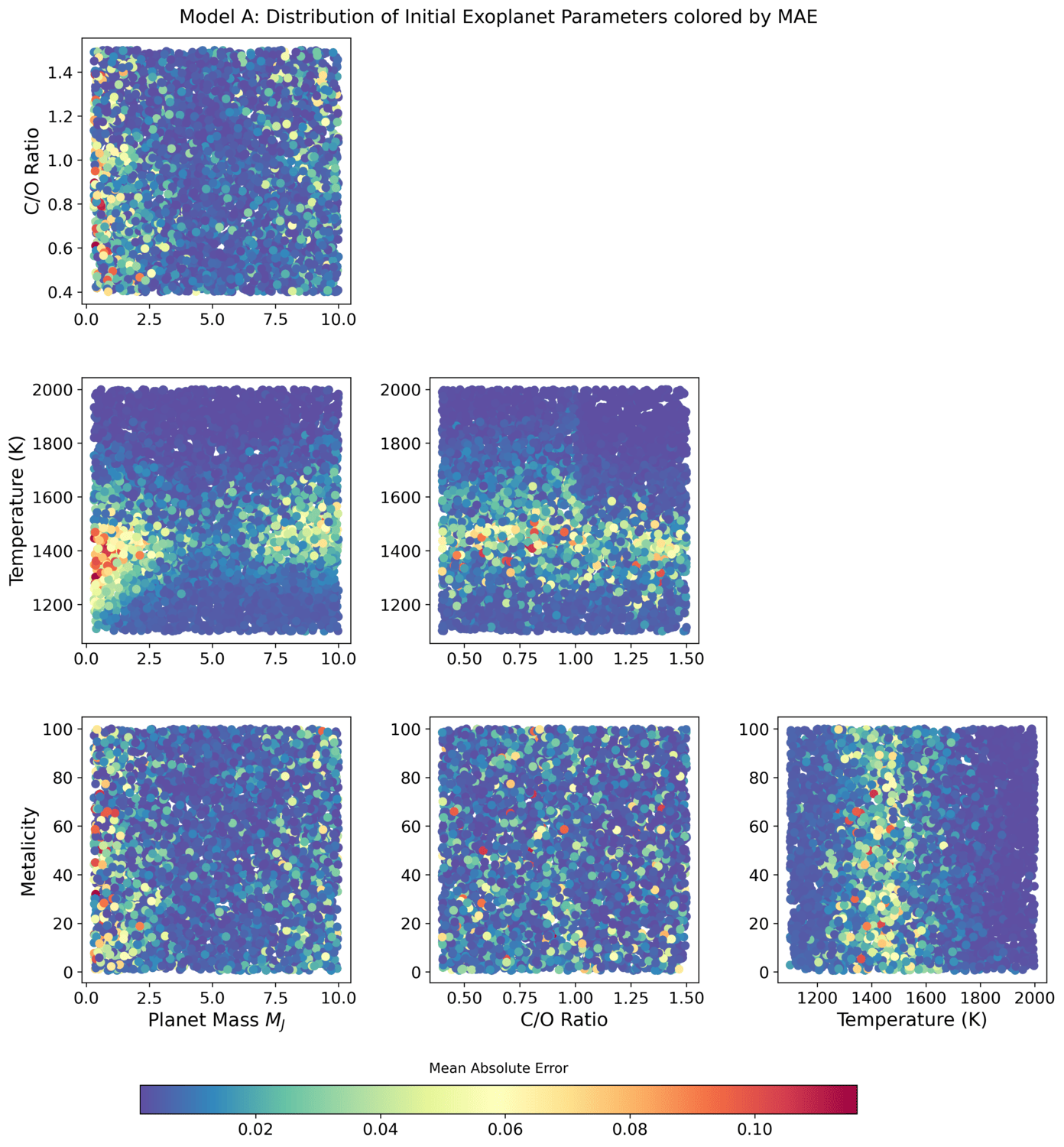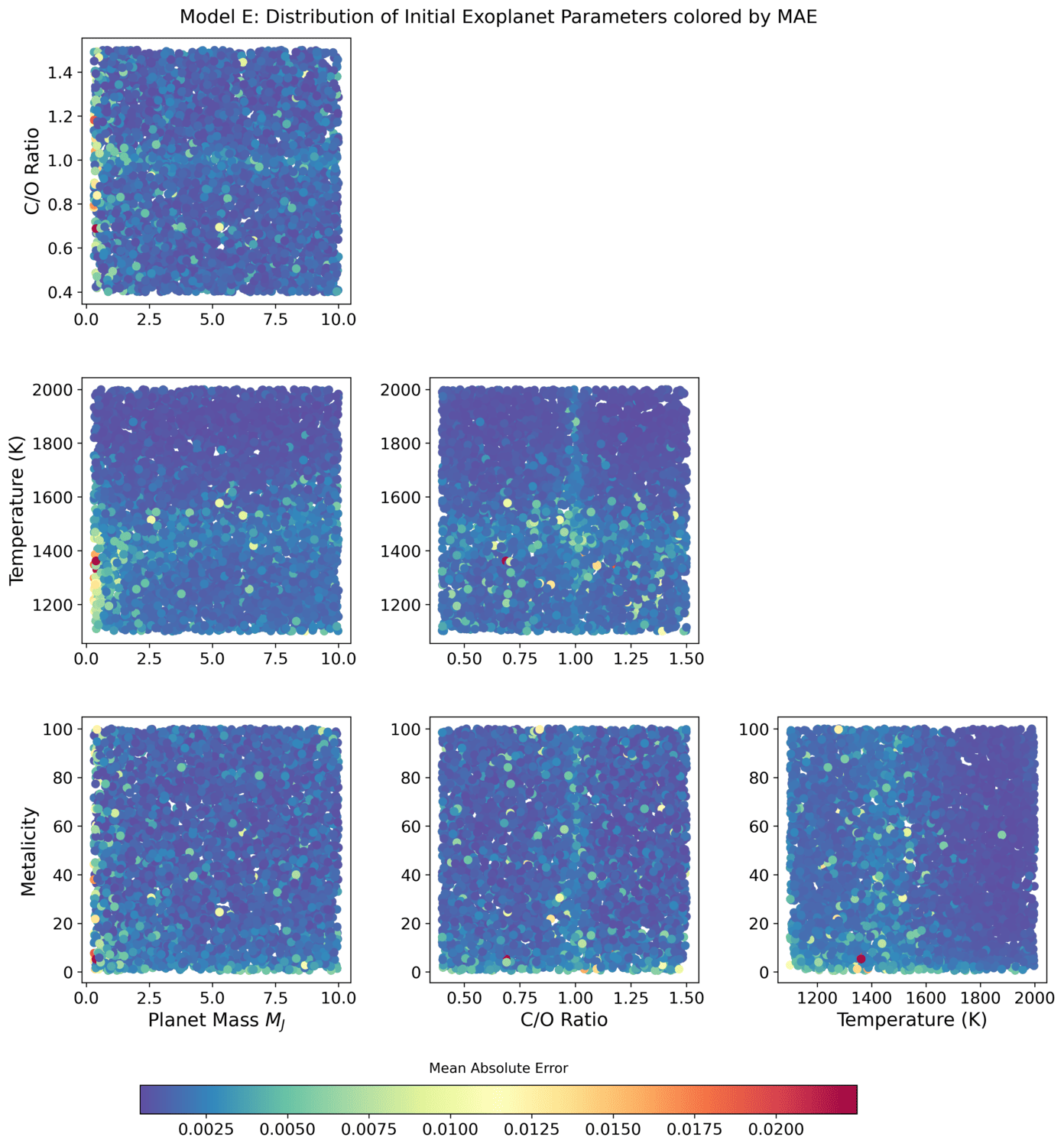A Novel Approach to Fast-Tracking Disequilibrium Chemistry Calculations for Exoplanets Using Neural Networks
- 1Department of Physics and Astronomy, University College London, Gower Street, WC1E 6BT London, United Kingdom
- 2European Space Agency, ESAC, Camino Bajo del Castillo, 28692, Villanueva de la Cañada, Madrid, Spain
In recent years, the study of exoplanetary atmospheres has increasingly relied on detailed disequilibrium chemistry models to understand atmospheric composition and dynamics. These models are computationally intensive, often requiring significant time and resources. We introduce CHEXANET, a novel U-Net-based neural network architecture designed to efficiently simulate disequilibrium chemistry in exoplanetary atmospheres, with network design driven by data exploration.
We have developed a machine learning framework that uses neural networks to predict the steady-state abundances of key chemical species in exoplanetary atmospheres. Our method involves training the neural networks on a comprehensive dataset generated from traditional disequilibrium chemistry models. Once trained, these networks can rapidly approximate the outcomes of the full models, substantially reducing computation time.
Our method was validated across a range of exoplanetary atmospheres, ranging from warm Neptunes to hot-Jupiters and an expansive range of chemistries. Our results demonstrate that the neural network models can achieve high accuracy in reproducing the steady-state solutions of complex chemical systems. Specifically, it significantly enhances computational efficiency, reducing the prediction time for atmospheric disequilibrium states to just one second per atmosphere on a standard personal computer—over a hundred times faster than traditional methods. Our approach accelerates the simulation process and makes it feasible to conduct extensive parameter studies and real-time atmospheric analysis.
A noteworthy part of the project is involving data-driven decisions in neural network design. We incorporated knowledge gained from preliminary data analysis, which included statistical analysis, principal component analysis, random forest analysis, and feature importance analysis. The examination stated above shows that involving initial parameters such as C/O ratio, temperature, metallicity, planet mass, and radius should significantly boost the predictive capabilities of simple U-net architecture. Figure 1 and 2 show the Mean Absolute Error of network prediction in correlation with initial parameters for two different networks, Model A, a simple U-net model, and Model E, a network incorporating initial parameters. A simple data-driven decision substantially reduced a bias observed in Model A. The future work will include a deeper description of data analysis and its influence on network behaviour to explain the Model's internal processes.
Our contribution highlights the potential of artificial intelligence in enhancing the capabilities of planetary science, providing a robust tool for future research in the characterization of exoplanets.

Figure 1: Pair plots illustrating the distribution of initial exoplanetary parameters: C/O ratio, Temperature (K), Metallicity, and Planet Mass (MJ), colour-coded by the Mean Absolute Error (MAE) for Model A. Notable is the cluster formation and a peak in MAE around a C/O ratio of 1.0 in the Temperature vs. C/O ratio plot, indicating a possible region of increased predictive difficulty. Moreover, the error for the higher C/O ratio decreases, as seen in the upper right corner of the plot. Temperature vs. Planet Mass plot reveals a non-linear pattern.

Figure 2: Pair plots illustrating the distribution of initial exoplanetary parameters: C/O ratio, Temperature (K), Metallicity, and Planet Mass (MJ), colour-coded by the Mean Absolute Error (MAE) for Model E. Although the prediction performance has improved compared to Figure 1, it is still noticeable that there is a cluster formation and a peak in MAE around a C/O ratio of 1.0 in the Temperature vs. C/O ratio plot, which suggests a possible area of increased predictive difficulty.
How to cite: Vojteková, A., Waldmann, I., Yip, K. H., Merín, B., and Al-Refaie, A. F.: A Novel Approach to Fast-Tracking Disequilibrium Chemistry Calculations for Exoplanets Using Neural Networks, Europlanet Science Congress 2024, Berlin, Germany, 8–13 Sep 2024, EPSC2024-440, https://doi.org/10.5194/epsc2024-440, 2024.